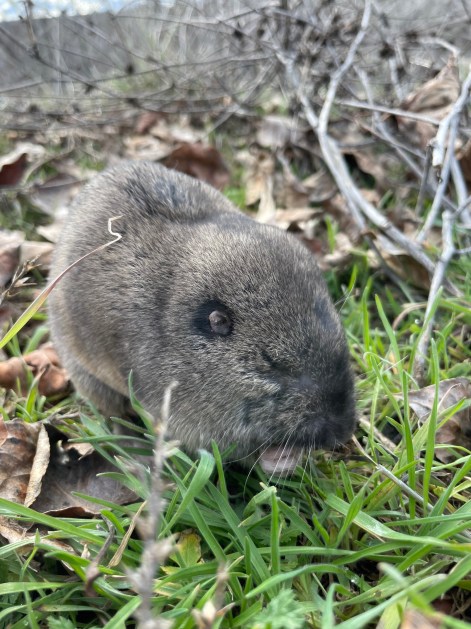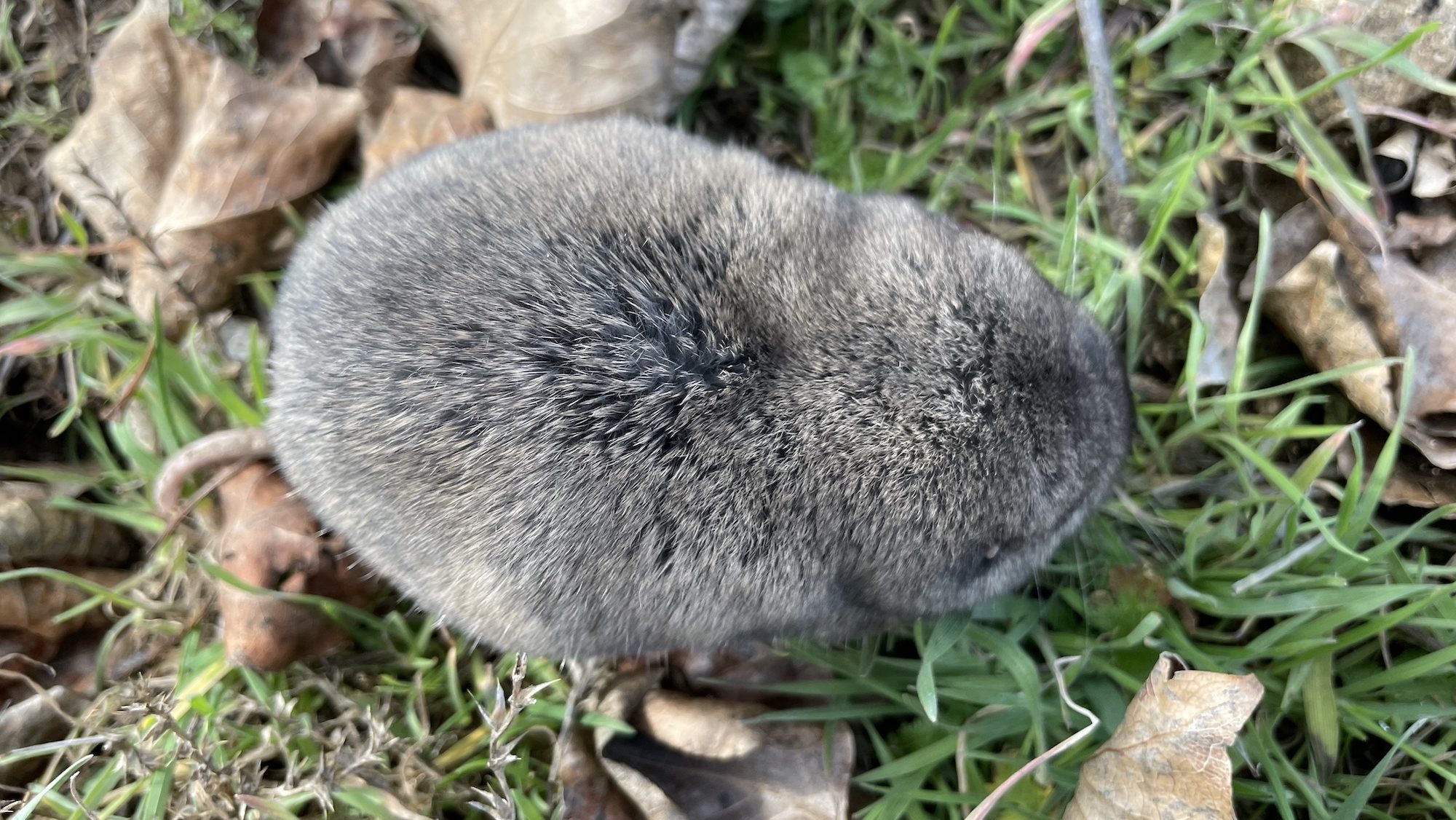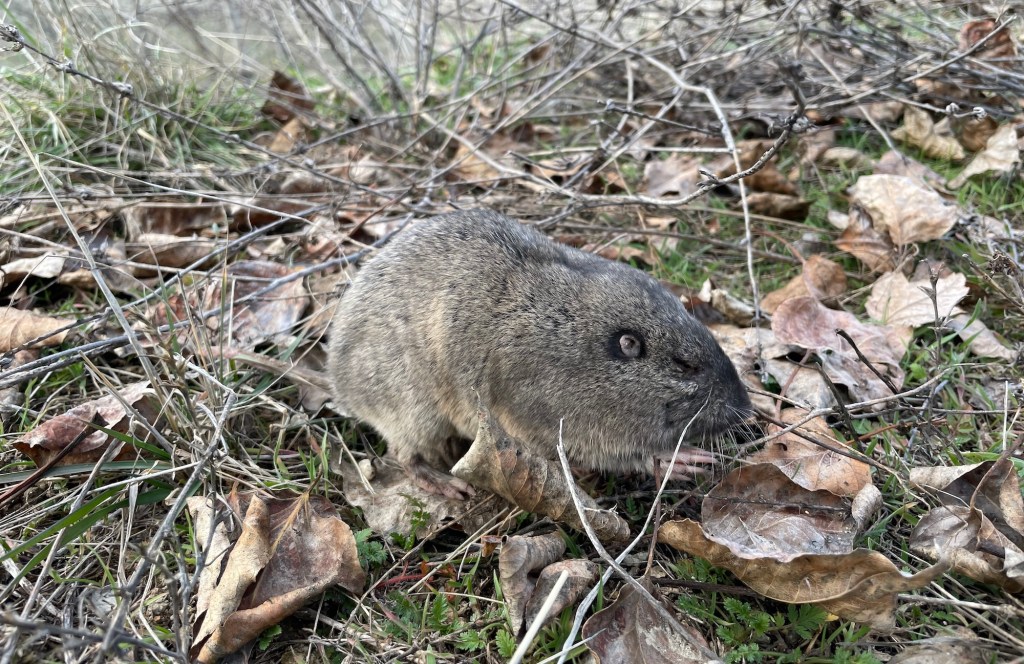I was lost in my thoughts on a recent gray, dreary day when I heard rustling. Immediately I was out of my head and into the (literal) weeds. The creature moved brush just a few feet away, and I could immediately tell it wasn’t a bird.
I pulled at a shrub and saw a sausage-shaped rodent. A pocket gopher?
Pocket gophers spend most of their lives underground. There are some 38 species found across a wide swath of central and North America. In many areas, they’re abundant. And yet, many people have never seen one.
Become a Member
Make a lasting impact for nature when you join The Nature Conservancy!
I’ve been regularly walking the Boise River greenbelt – a 25-mile path that runs through Boise, Idaho – for more than two decades. One of the reasons is that I so often see interesting wildlife. Here was a new experience: the chance to observe a gopher, at close range and above ground.
I quietly moved near it. I didn’t need to be so cautious. Superbly adapted to life underground, the pocket gopher seemed oblivious to above-ground happenings. I moved closer, until I sat about a foot from the rodent. I’d be able to enjoy observing the gopher forage on fresh green grass for the next 20 minutes.
The “Elusive” Gopher
Most North Americans have heard of gophers. If you’re of a certain age, the first image that comes to mind is probably the elusive “varmint” that outwits Bill Murray in Caddyshack. The gopher doesn’t look much like the furry critter in that movie. Many people also use the “gopher” term as a catch-all for ground-dwelling rodents like ground squirrels and voles.

In reality, it’s not easy to see a living gopher, even though they’re found in a wide swath of the continent from Canada to southern Mexico. While you might not see one running around your yard, it is pretty easy to determine if you have pocket gophers living nearby. They leave very distinctive, bare-earth mounds. In areas where they are abundant and active, these mounds are highly visible. The fresh ones are topped with very loose, almost-fluffy earth.
You will not find an entrance to the mound, which distinguishes the pocket gopher from ground squirrels, voles and many other burrowing mammals.
They have small ears and eyes, because they have little use for them. (This is why I was able to sneak so close to the above-ground gopher).
But they have super-sensitive whiskers and tail, that enable them to negotiate the dark tunnels. Their tail is so sensitive in detecting the sides of tunnels that they can run backwards almost as fast as they can forward.
Pocket gophers have super-sized cheek pouches (hence their name). These fur-lined pouches are used to gather up large amounts of plant material. They can be turned inside out for cleaning. They also fold in behind the pocket gopher’s large incisors. This way, when the gopher is burrowing through the earth, it can use its teeth as tools without getting soil in its mouth.
You might only see the mound of soil, but beneath the earth is a large tunnel with chambers for specific functions. They essentially have separate “rooms” that serve as a nursery, a kitchen and, yes, a bathroom.
Pocket gophers have little reason to go above ground. They’re antisocial and rarely leave their own burrow system. But at times you get lucky.
Gopher Spotting
Even pocket gophers come above ground occasionally. Sometimes you see their head pop up as they mend a hole in their mound. According to the Arizona-Sonora Desert Museum, male gophers will leave burrows to search for mates and youngsters will leave when it’s time to disperse. One source notes they may also come above ground to forage on fresh greens during nights or very cloudy days. This was the case when I had my gopher encounter.
There’s a tactic that obsessed mammal watchers use to reliably spot gophers, a tactic I wrote about previously. Basically, you find a fresh gopher mound and poke a hole in the loose earth. The gopher is light sensitive and will often quickly move to plug up the hole. This can give surprisingly good views, allowing skilled mammal enthusiasts to even identify the species of gopher.
I write about many wildlife activities that will earn you weird looks from the neighbors. Gopher spotting is near the top of that list. Last year, there was a spot at a local playground that had Townsend’s pocket gophers. I took several traveling mammal enthusiasts – no, I’m not making this story up – to the playground to see this species.
I can ensure you that walking around the fringes of a city park with broomsticks and cameras, while staring down holes, is a sure ticket to be the featured attraction of a Nextdoor app conspiracy theory. Hostile neighbors emerged to demand what was going on, and I’m not sure that “recreational gopher spotting” was a satisfactory answer.
Still, it works and if you want to see a pocket gopher, this is one way to do it.
I have. It’s fun to do. But you will have only a short glance before the gopher plugs the mound and is out of sight.
So the chance to sit with a gopher is, if you’re a certain type of person, a real treat.

Quality Time with Gophers
Gophers are typically despised by farmers, gardeners and lawn owners. Those mounds are unsightly and can be destructive to crops. I should also point out that, in natural ecosystems, gophers play an important role; their burrowing aerates soil, reducing compaction and erosion.
Still, most of the information you find about gophers is how to kill them. Pocket gophers rate pretty low on the “charismatic fauna” scale.
But I dare you to sit with one for 20 minutes and not have at least a little appreciation for them. I was surprised by how sleek this northern pocket gopher – identified by its gray pelage and black spot by its ears – looked. The gophers I’ve seen churning soil looked appropriately dirty. This one seemed fluffy, almost like an oversized hamster.
Up close, I could appreciate how adapted this critter was to the underground life. Those little nubs of ears and nearly non-existent eyes stuck out. So did its impressive claws, perfect for digging. At times the gopher would move an inch from my hand, and do a little jump, as if it suspected something amiss. But then it went right back to foraging.
Even after a lifetime of looking at wildlife, there are still surprises, even in the local neighborhood. It keeps me looking and listening. Keep an eye out when you see churned-up mounds of earth. A new creature encounter might be closer than you think.




Well said. Thank you. Small off grid property owner in NE MT getting to know burgeoning pocket gopher aerators!
I saw a pocket gopher for the first time today. He was scurrying around on my college campus. I’m so glad he caught my eye and that I was able to spend a few minutes watching him forage for greenery. I was a little bit concerned with how close he was to me and other pedestrians on the sidewalk, but it sounds like that’s normal for a little creature whose eyes are so small they barely open. I like to think he’s helping to aerate the soil for all the lovely vegetation on campus. Maybe I’ll see him again one day. Thank you for this article!
I saw one today in my backyard! Your story is spot on! They are docile but when poked, clap their teeth together as a warning. This guy seemed completely oblivious to me standing mere inches away. I initially observed him curled up in the grass, just laying there like a domesticated pet, enjoying the sun. I eventually moved him to another lot in my area using an empty bucket. There is heavy construction going on near my home. He was so gentle and slow moving. It was a cool experience.
I really enjoyed this story about the Pocket Gopher. Reminds me so much of the Woodchuck family that had been living under my shed for many years. I’m always in anticipation of them emerging from hibernation and unlike the Pocket Gopher, wondering where their next entrance/exit hole might suddenly appear.